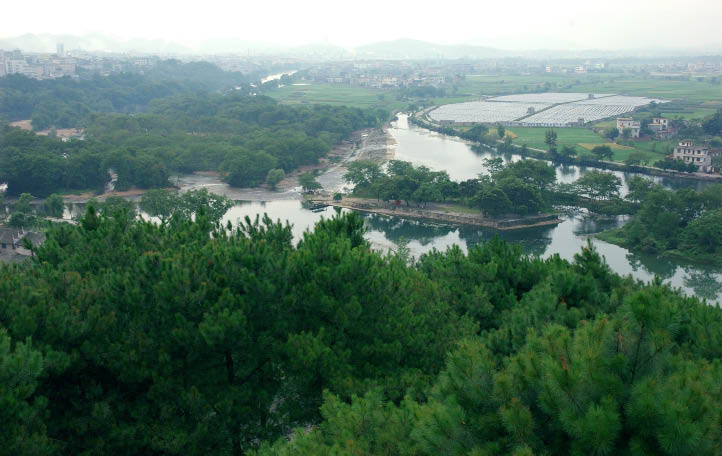|
Lingqu Canal
|
 |
|
Lingqu Canal connects the Yangtze and the Pearl River systems. Photos by China Foto Press |
Lingqu Canal, also known to history as the Douhe River and Xing'an Canal, is located in Xing'an County of Guangxi Zhuang Autonomous Region. Dating back over 2,200 years, the Lingqu Canal is one of the oldest canals in the world.
In 221 BC, Emperor Qinshihuang vanquished the contending states and unified the Central Plains area under the Qin Dynasty. With a view to extending his conquests to the states in southern China, in 219 BC Emperor Qinshihuang appointed an official Shi Lu to construct a canal to transport army provisions.
The main projects, including the Doumen (the first ship lock in the world), North and South Channels and the Qin Dyke formed a water transportation network connecting the Yangtze and the Pearl river systems.
The Lingqu Canal has enjoyed great renown by reason of its design and outstanding constructions. It is considered one of the three greatest water conservancy projects of the Qin Dynasty, the others being the Dujiangyan Irrigation System and the Zhengguo Canal.
The canal ensured food and material supplies reached Qin troops. In addition to its significance in military logistics, it was vitally important in unifying the country, integrating different ethnic groups and facilitating economic and cultural exchanges between central and southern China. In terms of strengthening frontier defenses, it can be compared to the Great Wall in China's north.
Under the Han and Tang dynasties, the Lingqu Canal was further improved, and it continues to be important in transportation and irrigation.
Beijing-Hangzhou Grand Canal
The Beijing-Hangzhou Grand Canal is one of the longest and oldest man-made waterways in the world. Starting at Beijing, it passes through Tianjin and the provinces of Hebei, Shandong and Jiangsu before terminating in Hangzhou, Zhejiang Province. With a total length of 1,794 kilometers, the canal links the water systems of the Yangtze, Yellow, Huaihe, Haihe, and Qiantang rivers.
The oldest parts of the canal date back to 486 BC, and several sections were dug during the next few centuries. But the canal was eventually connected in the Sui Dynasty (581–618) when Emperor Yang Guang ordered more than two million people to work on the project. Following further development under the Tang (618–907) and Song (960–1279) dynasties, in the Yuan Dynasty (1271–1368) the canal became a grand waterway that linked its capital Dadu (Beijing) and Hangzhou in the year 1293.
The Beijing-Hangzhou Grand Canal also played an important role in strengthening economic and cultural exchanges between north and south China, boosting the economies of regions along its route as well as stimulating the growth of cities and towns.
However, its importance went into decline in the 19th century with the development of alternative sea routes and the building of railways. For decades, the northern and southern parts of the canal remained disconnected. Many sections fell into disrepair and some parts reverted to fields. After the founding of the People's Republic of China in 1949, reconstruction work began. The canal is currently being upgraded to serve as the Eastern Route of the South-to-North Water Diversion Project. | 